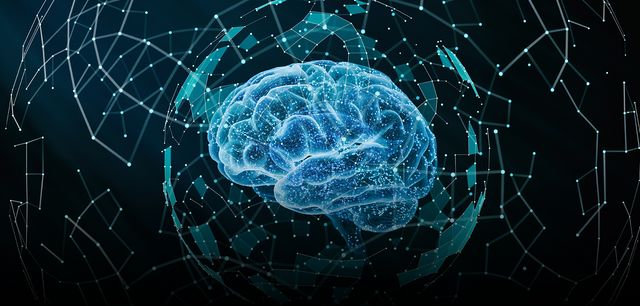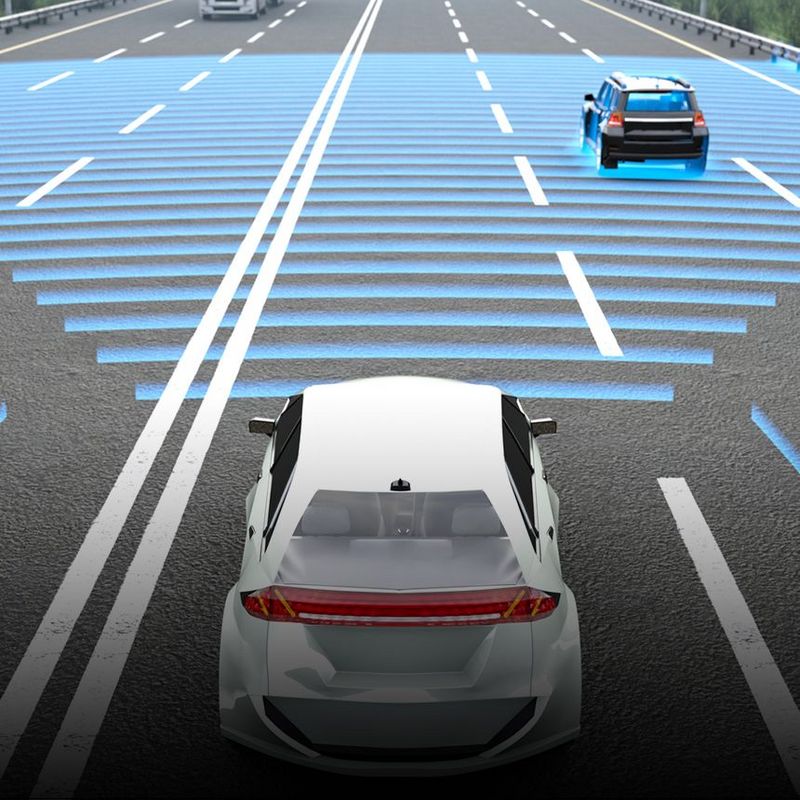07. April 2022
The topic of machine learning is suddenly on everyone’s lips. But how does Artificial Intelligence (AI) get trained? How does it learn to distinguish between common formats? What can go wrong in the process, and what can be done to prevent bias? Answers to these questions come courtesy of Thora Markert, AI expert at TÜViT.
What are artificial neural networks?
Thora Markert: Whenever we humans learn something, it changes the structure of our brain: Particular connections between the nerve cells and regions of the brain become more active. Artificial neural networks mimic this brain structure and its synapses. These networks consist of neurons – also known as nodes – which are connected edgewise with each other. During the learning process, the weighting of these edges changes, serving to define how the connected neurons will later respond to learned patterns. By the end of the training, all weights have been fully adjusted and the learning process is complete: the “learning content” has been fully assimilated. Although the concept of artificial neural networks was first devised back in the 1940s, it took more recent advances in computer technology to pave the way to ever more complex networks: in the deep neural network, many thousands of neurons are connected like links in a chain. Deep learning puts artificial intelligence in the position to recognise patterns in complex data.
What is supervised learning?
Supervised learning is the most common form of machine learning and is in most cases based on neural networks. When training AI, it is supported by what is known as “ground truth”. This means that the training data are known and labelled. So, if you want to teach AI to recognise and distinguish between cats and dogs, you feed it with a large number of labelled example images. Just as you show a small child dogs and cats until it can recognise these animals independently. During the learning phase, the AI system attempts to derive patterns and rules from these data. In the next stage, its “learning status” is reviewed: if it mistakes a dog for a cat, the weights between the neurons in the neural network are adjusted to minimise the error. Typical applications for supervised learning are image recognition, speech recognition, facial recognition and prediction models which are used, for instance, to forecast the spread of coronavirus.
© iStockNone like the other, and yet all cats: If AI is to reliably recognise velvet paws, it has to learn from a multitude of labelled example pictures.
What is semi-supervised learning?
Procuring large amounts of data and having people label them is time-consuming and expensive. If there aren’t enough labelled data available for the AI’s field of application, semi-supervised learning can be used. The AI is initially taught using labelled data and, in the next step, fed with unknown data. The system draws on what it has previously learnt to establish what it is meant to recognise. If a neural network is used, the weights in this network are adjusted in a further training phase, and the hit rate increases. But because, unlike in supervised learning, the AI cannot rely completely on ground truth, the resulting value is approximate. The uses of supervised and semi-supervised learning are generally the same. The latter is particularly useful for areas which it is virtually impossible to cover using example data: in speech recognition, for instance, in which a large number of regional and individual linguistic colourations come into effect.
What is unsupervised learning?
With unsupervised learning, the data are not labelled, nor is a specific objective defined for the AI, like “recognise a cat”. It is used to group or divide up data. For example, which properties – colours, forms and so on – most frequently overlap in pears, apples and oranges. In place of neural networks, unsupervised learning mainly uses statistical methods.
„The ‘learning success’ of AI depends entirely on the quality of the training data.“
What can go wrong with AI learning?
The “learning success” of AI depends entirely on the quality of the training data: these have to be representative of the field of use and cover as many variants as possible. If the data are too similar, this can result in what is known as overfitting. Here’s an example: different photos each show different cats, all of which are sitting in the centre of the image. The AI will then learn that cats always only sit in the middle of the image but not acquire any generalised patterns, which explains why it will not be able to recognise cats in unknown images. It therefore follows that data selection should always involve experts from the specialist field in question. And there’s another problem: if one-sided data are used, this can result in “bias”: the AI discriminates between people based on their age, sex or origin. If, for instance, a company uses AI to select candidates, but the AI has recourse only to its “historic” data, it may well mainly select middle-aged white men because these positions have overwhelmingly been occupied by such people in the past. Until binding guidelines for the ethical use of AI have been defined, this problem can only be countered through controls: Where do the data come from? Who is responsible for them? How are they labelled? A random sampling process can then be used to test whether the AI arrives at “fair” results.
About Thora Markert
© TÜViT
Thora Markert is a Senior AI Expert at TÜViT. The computer scientist works mainly on the reliability and IT security of AI and is developing a test environment for artificial intelligence to put it through its paces in inspections.
What is robust learning?
Just how an AI draws its conclusions and what it looks for when analysing a cat photo can only be approximately understood – even in the still new field of explainable AI. Whether an AI will always recognise a cat as a cat and a stop sign as a stop sign can therefore not be predicted with absolute confidence. This makes artificial intelligence vulnerable to adversarial attacks: patterns laid down using images which are designed to mislead the AI. Human beings will hardly recognise them, but such patterns might turn a dog into a balloon or a stop sign into a right-of-way sign. Robust learning confronts the AI right from the training stage with such disruptive patterns and deviations, with the aim of immunising it against manipulation and mistakes.





